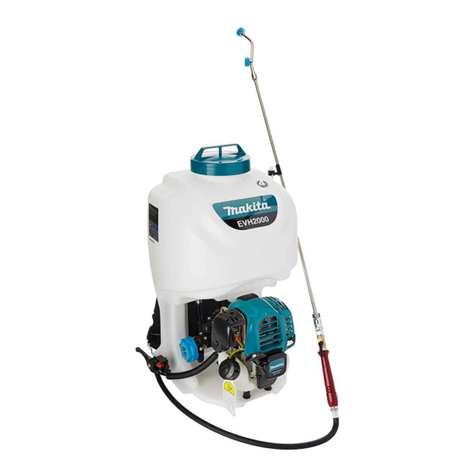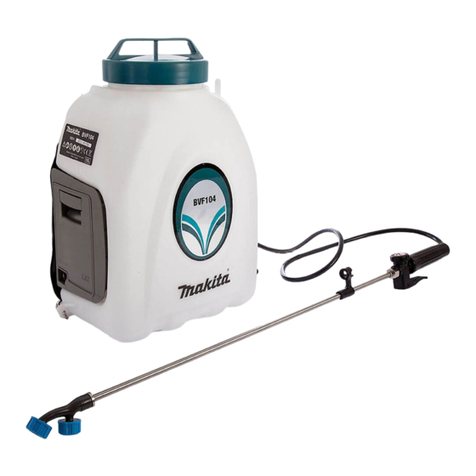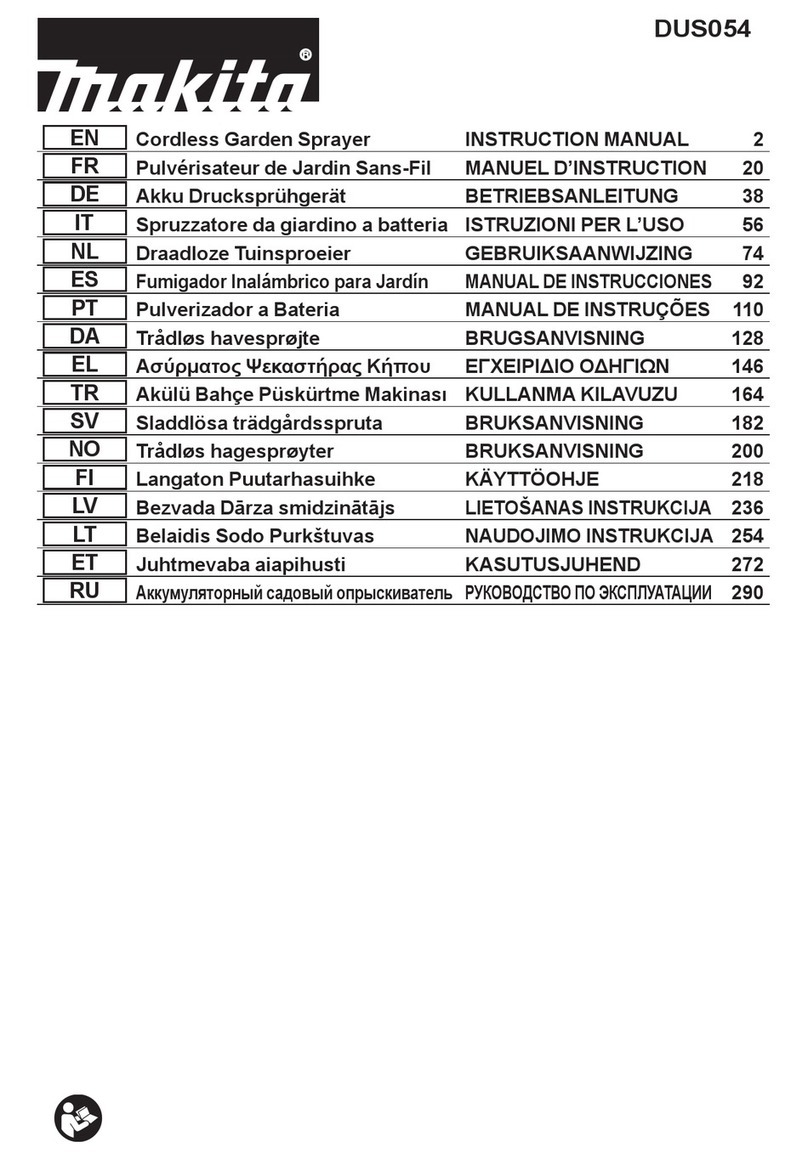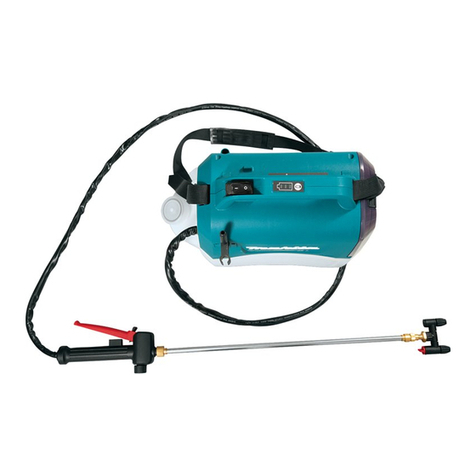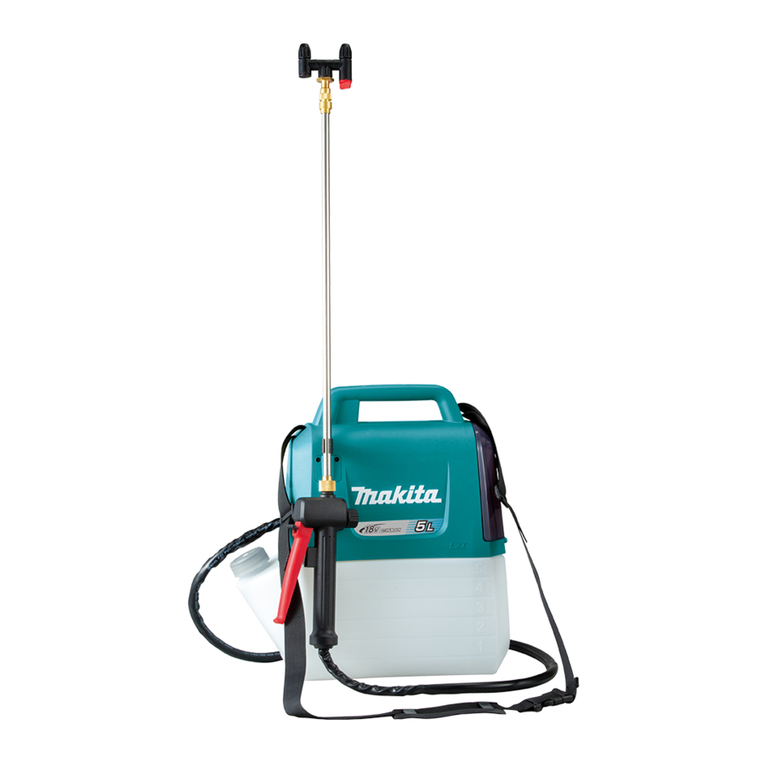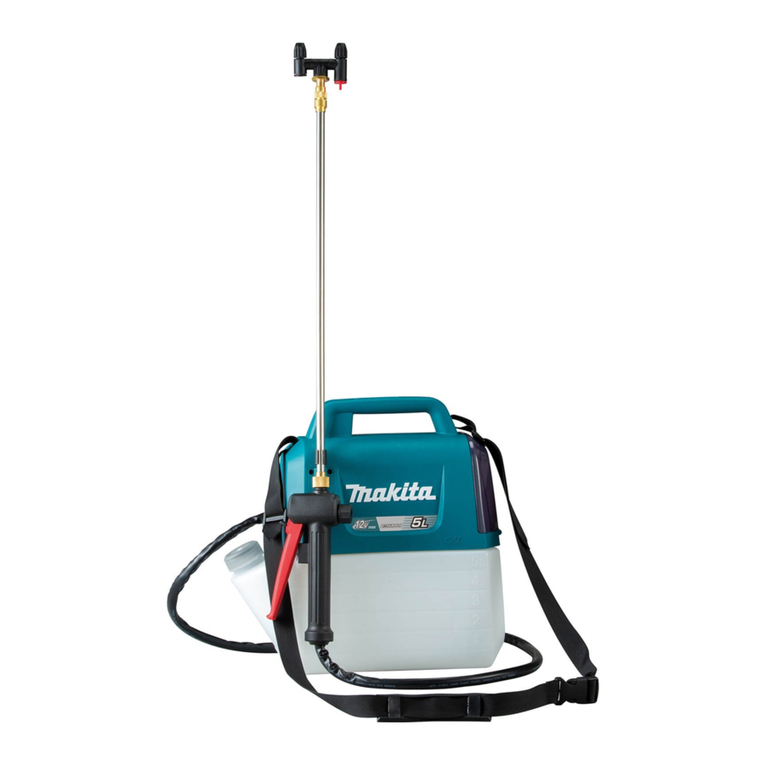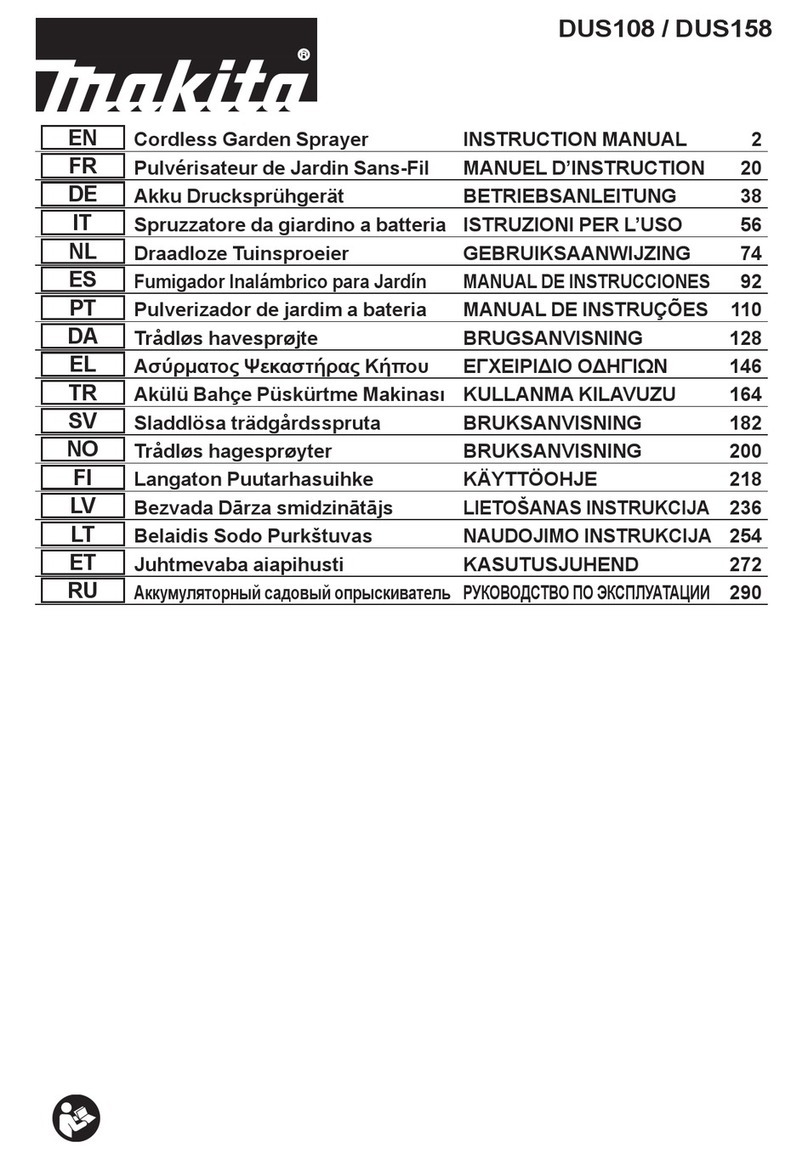
5English
■ Know the contents of the chemical being
sprayed. Read all Material Safety Data Sheets
(MSDS) and container labels provided with the
chemical. Follow the chemical manufacturer’s
safety instructions.
■ Do not leave residue or spray material in the
tank after using the sprayer. Clean after each use.
■ Do not smoke while using the sprayer, or spray
where spark or ame is present.
■ Risk of injection. Do not discharge directly against
skin.
■ To reduce the risk of electric shock, do not put
the sprayer into water or other liquid. Do not
place or store the sprayer where it can fall or be
pulled into a tub or sink.
■ Maintain this product. Thoroughly inspect both
the inside and outside of the sprayer and exam-
ine the components before each use. Check for
cracked and deteriorated hoses, leaks, clogged
nozzles, and missing or damaged parts. If dam-
aged, have the product repaired before use.
Many accidents are caused by poorly maintained
products.
■ Disconnect the battery from the unit before
draining, cleaning, or storing the sprayer. Such
preventive safety measures reduce the risk of acci-
dental starting.
■ Always wear eye protection with side shields
or goggles marked to comply with ANSI Z87.1.
Failure to do so could result in uids entering your
eyes resulting in possible serious injury.
■ Protect your lungs. Wear a face or dust mask
when using the sprayer. Following this rule will
reduce the risk of serious personal injury.
■ Battery tools do not have to be plugged into
an electrical outlet; therefore, they are always
in operating condition. Be aware of possible
hazards when not using your battery tool or
when changing accessories. Remove battery
pack when tool is not in use. Following this rule
will reduce the risk of electric shock, re, or serious
personal injury.
■ Do not place battery tools or their batteries near
re or heat. This will reduce the risk of explosion
and possibly injury.
■ Do not crush, drop or damage battery pack. Do
not use a battery pack or charger that has been
dropped or received a sharp blow. A damaged
battery is subject to explosion. Properly dispose of a
dropped or damaged battery immediately.
■ Batteries can explode in the presence of a
source of ignition, such as a pilot light. To reduce
the risk of serious personal injury, never use any
cordless product in the presence of open ame. An
exploded battery can propel debris and chemicals. If
exposed, ush with water immediately.
■ Do not charge battery tool in a damp or wet
location. Following this rule will reduce the risk of
electric shock.
■
For best results, your battery tool should be
charged in a location where the temperature is
more than 10 °C (50 °F) but less than 40 °C (104 °F).
To reduce the risk of serious personal injury, do not
store outside or in vehicles.
■ Under extreme usage or temperature conditions,
battery leakage may occur. If liquid comes in
contact with your skin, wash immediately with
soap and water. If liquid gets into your eyes,
ush them with clean water for at least 10 min-
utes, then seek immediate medical attention.
Following this rule will reduce the risk of serious
personal injury.
■ Do not use battery-operated appliance in rain.
■ Exercise care in handling batteries in order not
to short the battery with conducting materials
such as rings, bracelets, and keys. The battery or
conductor may overheat and cause burns.
■ Do not dispose of the battery(ies) in a re. The
cell may explode. Check with local codes for possi-
ble special disposal instructions.
■ Do not open or mutilate the battery(ies).
Released electrolyte is corrosive and may cause
damage to the eyes or skin. It may be toxic if
swallowed.
■ Avoid Dangerous Environment - Don’t use appli-
ances in damp or wet locations.
■ Use Right Appliance - Do not use appliance for
any job except that for which it is intended.
■ Don’ t Force Appliance - It will do the job better
and with less likelihood of a risk of injury at the rate
for which it was designed.
■ Store Idle Appliances Indoors - When not in use,
appliances should be stored indoors in dry, and high
or locked-up place - out of reach of children.
■ Maintain Appliance With Care - Keep clean for
best performance and to reduce the risk of injury.
Follow instructions for changing accessories.
Inspect appliance cord, and if damaged, have it
repaired by an authorized service facility. Keep
handles dry, clean, and free from oil and grease.
■ Check Damaged Parts - Before further use of the
appliance, a guard or other part that is damaged
should be carefully checked to determine that it will
operate properly and perform its intended function.
Check for alignment of moving parts, binding of
moving parts, breakage of parts, mounting, and any
other condition that may aect its operation. A guard
or other part that is damaged should be properly
repaired or replaced by an authorized service center
unless indicated elsewhere in this manual.
■ Don’t topple a lled-up tank to avoid leak in case
tank lid is not tightened.
Residual risks
Even if you use this electric power tool in
accordance with instructions, certain resid-
ual risks cannot be rules out. The following
hazards may arise in connection with the
equipment’s construction and layout:
1. Lung damage if no suitable protective mask is used.
2. Contact with hazardous substances. Spray mate-
rials can be harmful if inhaled or swallowed or if
allowed to come into contact with the skin or eyes.
Follow the instructions and wear suitable protective
equipment.
